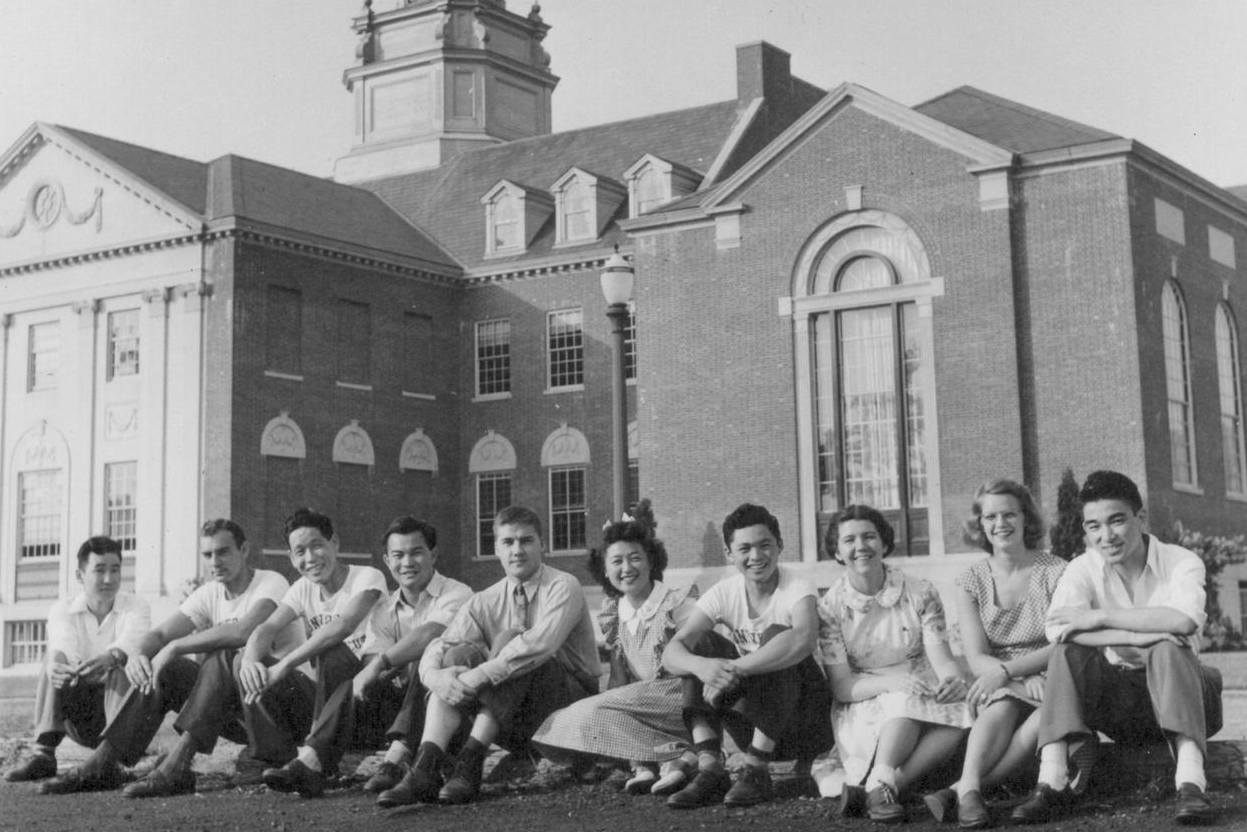Sixty years after a Quaker organization advocated for Japanese Americans during World War II, in the aftermath of 9/11 the Japanese American Citizens League voiced its support for Muslim Americans. When asked by UConn Reads author Eboo Patel why the League would engage in such advocacy, its leader John Tateishi responded that it was his turn to protect another community. Patel will discuss his book ‘Sacred Ground,’ which includes his interview with Tateishi, at a public lecture in the Jorgensen Center for the Performing Arts on March 1, beginning at 7 p.m.
Standing on principle may seem, in hindsight, a simple choice. Throughout the nation’s history, many individuals have turned to what President Abraham Lincoln famously termed “the better angels” of their nature to promote the welfare and inclusion of others. But while the decision to be just and judicious may appear commonsensical, such actions are – in the harsh light of crisis – not so much commonplace but rather quite extraordinary, as evidenced by the following wartime account.
The most American thing you can do is stand up for someone else. — John Tateishi, quoted by Eboo Patel
Following the Japanese bombing of Pearl Harbor in 1941, the U.S. was gripped by fear of a further Japanese attack on the West Coast. Just two months later, an executive order issued by President Franklin D. Roosevelt sought to contain the “alien threat” from within, through relocation and imprisonment.
Even though the original order did not carry any specific designations with regard to race, ethnicity, nationality, or religion, it was – with few exceptions – exclusively applied to Japanese Americans living in California, Oregon, and Washington. And in the months that followed, first- and second-generation Japanese Americans were summarily rounded up and detained in isolated inland areas of the country, where they were forced to live in harsh conditions.

When some young detainees were given the option of attending college (after filling out a loyalty questionnaire) instead of staying in the camps, many universities refused to enroll them. The University of Connecticut was one of 143 institutions on the East Coast – and the only one in Connecticut – that willingly accepted former internees as students. Between 1943 and 1944, 18 Nisei – or second-generation Japanese Americans – enrolled in Storrs.
UConn’s action represented a principled stand, at a time when such an action was highly unpopular and greatly contested. But it would not have happened without the involvement of the American Friends Service Committee (AFSC), a religious society focused on peace and social justice.
While much of the nation supported the mass incarceration of Japanese Americans, the AFSC consistently stressed the unconstitutionality of such actions. Their non-governmental “outsider” status proved significant during the internment period. Although the first director of the War Relocation Authority charged with overseeing internment, Milton Eisenhower, was quite critical of internment policy, he was constrained by his connection to the federal government. By contrast, the AFSC – as an external interfaith organization – was able to tirelessly and successfully advocate for Japanese Americans and their constitutional rights. Indeed, the AFSC became the primary entity responsible for the phased release of these individuals from camp during World War II.

Founded in 1917 and originally envisioned as a Quaker organization that would provide conscientious objectors a viable alternative to military service, the AFSC was above all a humanitarian organization. During “the Great War” (1914-1918), the AFSC provided much-needed relief and assistance to civilians affected by the violence and destruction of war. When that war was over, the organization played an integral role in the post-conflict rehabilitation of Europe and the Soviet Union, and also was active at home in promoting improved race relations and advocating for civil rights.
But while many are aware of the AFSC’s more recent reputation as a social justice organization, it is not always remembered that its mission is grounded in religious tolerance, nor that that mission is inextricably tied to the AFSC’s Quaker origins.
As Eboo Patel points out in this year’s UConn Reads book, Sacred Ground: Pluralism, Prejudice, and the Promise of America (2012), a petition in the 17th century for an exemption to legislation prohibiting Quaker ‘heresy’ is acknowledged as the basis for the Constitution’s “freedom of religion” provision in the Bill of Rights.
In the 1940s, at the same time the AFSC was active nationwide advocating for the Japanese American internees, it worked closely with business leaders in Connecticut to secure jobs for Japanese Americans who were allowed to leave camp. And the AFSC collaborated with the University of Connecticut to find a place to study for those who hoped to further their education. Both organization and institution were able to see beyond what was problematic “commonsense” and “common practice.”
This particular history speaks directly to a specific moment in Sacred Ground, where the author recounts a conversation he had with John Tateishi, the executive director of the Japanese American Citizens League. In the days, weeks, and months that followed the Sept. 11 attacks, the Japanese American Citizens League repeatedly stressed its support of Muslim Americans. When asked by the author why the League would engage in such advocacy, Tateishi responded that when it was his turn to protect another community it was his responsibility to take it: “The most American thing you can do is stand up for someone else.”
Read about one Japanese American alumnus, Satoshi Oishi ’49 (ENG), who was one of those that benefited from the assistance of the American Friends Service Committee in supporting his application to UConn: http://news.engr.uconn.edu/an-engineering-alumnus-journey-from-an-internment-camp-to-uconn.php



